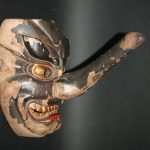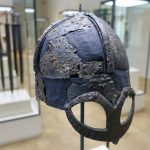The Night Lake Nyos Unleashed Death

The Night Lake Nyos Unleashed Death
On August 21, 1986, one of the strangest and deadliest natural disasters in modern history struck a remote valley in Cameroon.
That night, the peaceful waters of Lake Nyos suddenly released a massive cloud of carbon dioxide.
The invisible gas swept across villages in the dark, silent but suffocating.
Within minutes, more than 1,700 people had collapsed and died where they stood.
Cattle, goats, and wildlife—over 3,500 animals in total—also perished instantly.
Survivors described scenes of horror that defied belief.
Joseph Nkwain recalled smelling something foul before he lost consciousness.
When he awoke, his daughter was gone, and his village was eerily quiet.
He walked through Nyos and saw bodies everywhere, no signs of life.
The catastrophe became known as the “silent killer.”
Scientists later discovered the cause:
Lake Nyos sits above a pocket of volcanic activity that slowly leaks carbon dioxide into the water.
Over years, the gas had accumulated at the lake’s bottom, trapped under pressure.
On that night in 1986, something triggered its sudden release.
The result was a dense, rolling cloud heavier than air, displacing oxygen and suffocating everything in its path.
The event shocked the world and raised urgent questions.
Could other lakes pose the same hidden threat?
Researchers identified similar dangers at Lake Monoun, also in Cameroon.
Since then, engineers have installed degassing systems to slowly vent the gas from these lakes.
The measures aim to prevent another sudden, deadly release.
Yet for the families of Nyos, no science can erase the loss.
Entire villages were wiped out in a single night.
Survivors were left traumatized, grieving, and fearful of the water that once sustained them.
The disaster remains a haunting reminder of nature’s unseen power.
It showed that danger does not always roar like a storm or quake like an earthquake.
Sometimes, it drifts silently in the night air.
Sometimes, it kills without warning.
And sometimes, as Lake Nyos proved, the earth’s breath itself can turn deadly.











